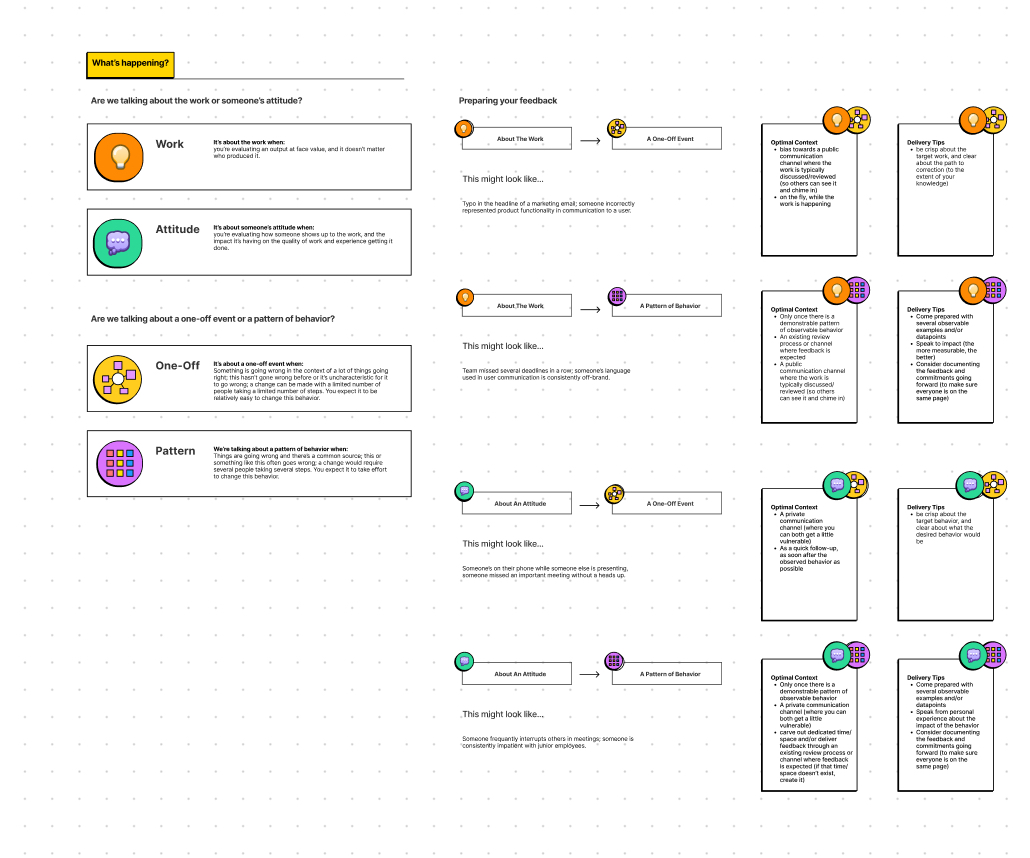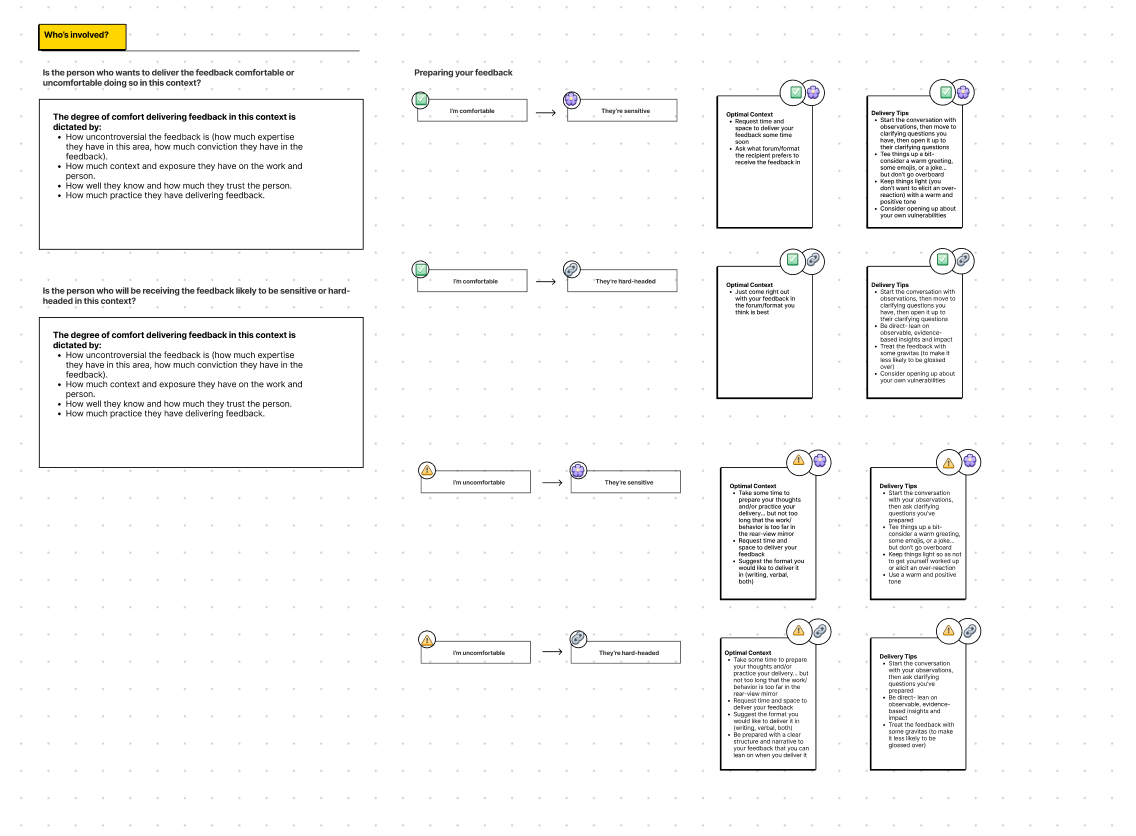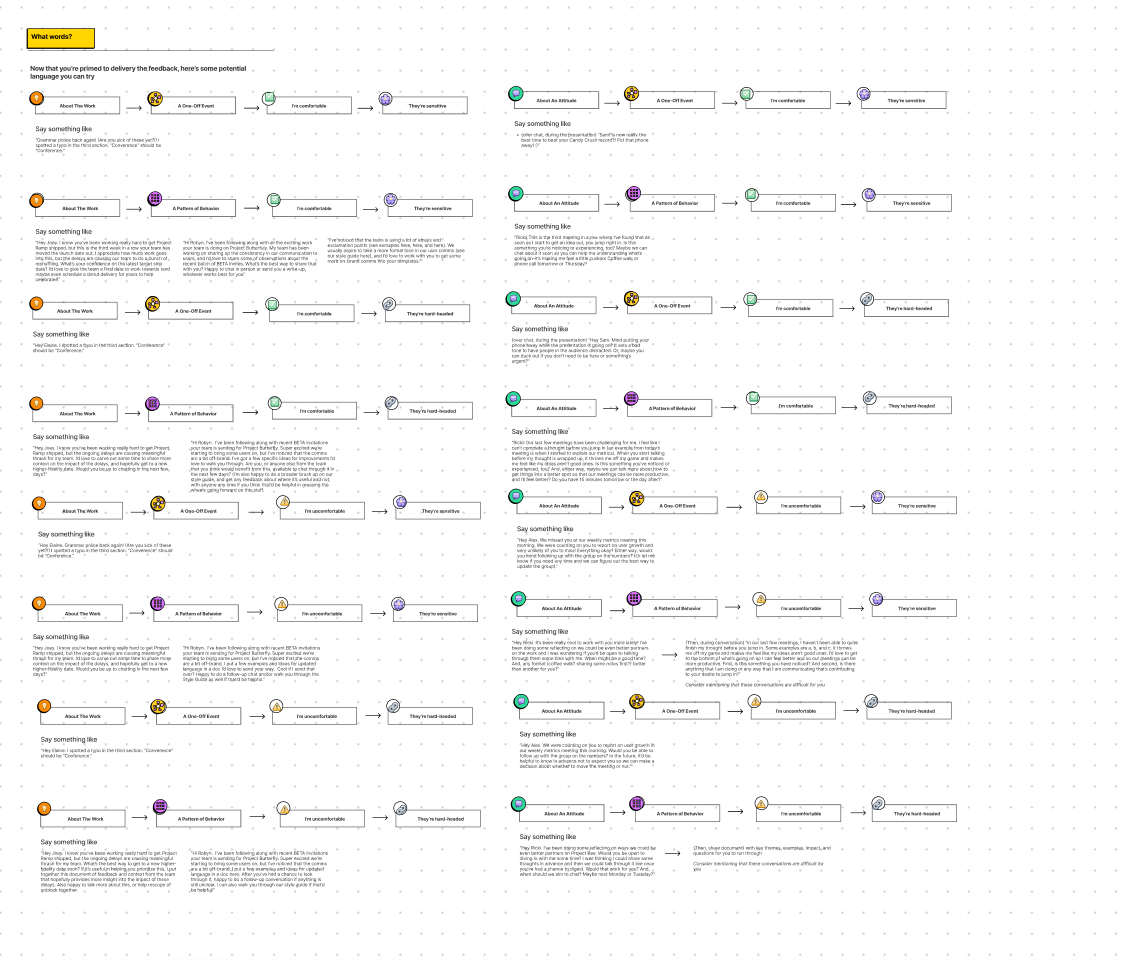
Sponsored By: Hotjar
Today’s newsletter is sponsored by Hotjar, an insights tool for improving your website or product.
Improving digital experiences is challenging, you aren't sitting with your customers, watching their every move on your page, and having to guess their needs. With Hotjar, you replace guesswork with visual and intuitive tools that tell you exactly what’s happening on your site and why.
Would you like to start connecting the dots between what's happening on your site and why it’s happening? Improve your user experience and create customer delight now — with 30 days on the business plan for free! No credit card required.
Hey! Dan here. Brie Wolfson is back with a continuation of her series on work culture. Brie writes and researches about the ways great organizations coordinate and build culture. She draws from her past experiences being part of companies like Stripe, Figma and Google—as well as her work helping company leaders do the same at Kool-Aid. If you like this piece you should check out the previous piece in the series, Managing Your Manager.
I hope you enjoy the article!
The moment people come together in your organization to exchange ideas is a precious and high-stakes one. The quality of that interaction will dictate not only the quality of the work output but also the way the people in it feel getting the work done.
It’s all hunky dory when the team’s on the same page; the work and high fives flow freely. But, as soon as someone perceives something’s going even a little bit off the rails, they face a conundrum: how to speak up in a way that makes the work and the team better.
Many of the feedback frameworks I’ve encountered are helpful at 30,000 feet but fail to offer meaningful guidance where the rubber meets the road. And beyond that, deciding when and where to apply which framework usually requires a bit of mental gymnastics. Is “radical candor” the best approach with my very sensitive colleague, or will it send him into a tailspin that’s unproductive for everyone? Will my hard-headed colleague totally see through my “shit sandwich” approach and tune me out before I even get to the juicy stuff in the middle? When my work bestie shows up to a meeting grumpy, do I really need to say, “When you say x, I feel y,” or can I just ask him if he woke up on the wrong side of the bed today and bring him a coffee?
Delivering feedback about the tough stuff in a way that lands is tricky, but the upside of doing a good job of it is enormous. So, here’s a step-by-step guide to help you get it right.
First, classify what’s happening and who’s involved.
What’s happening?
1a: Are we talking about the work or someone’s attitude?
- You’re talking about the work when: you’re evaluating an output at face value, and it doesn’t matter who produced it.
- You’re talking about the attitude when: you’re evaluating how someone shows up to the work, and the impact it’s having on the quality of work and experience getting it done.
1b: Are we talking about a one-off event or a pattern of behavior?
- We’re talking about a one-off event when: Something is going wrong in the context of a lot of things going right; this hasn’t gone wrong before or it’s uncharacteristic for it to go wrong; a change can be made with a limited number of people taking a limited number of steps.
- We’re talking about a pattern of behavior when: Things are going wrong and there’s a common source; this or something like this often goes wrong; a change would require several people taking several steps.
Examples:
- About the work and a single or specific event: Typo in the headline of a marketing email; someone incorrectly represented product functionality in communication to a user.
- About the work and a pattern of behavior: Team missed several deadlines in a row; someone’s language used in user communication is consistently off-brand.
- About the attitude and a single or specific event: Someone’s on their phone while someone else is presenting, someone missed an important meeting without a heads up.
- About the attitude and a pattern of behavior: Someone interrupts in meetings all the time; someone is impatient with junior employees.
If you want to visualize this step, I put together an infographic that summarizes it:
(click to see full size)
Once you've figured out what's happening, the next step is to get clear on who's involved.
Who’s involved?
2a. Is the person who wants to deliver the feedback comfortable or uncomfortable doing so in this context?
The degree of comfort delivering feedback in this context is dictated by:
- How uncontroversial the feedback is (how much expertise they have in this area, how much conviction they have in the feedback.)
- How much context and exposure they have on the work and person.
- How well they know and how much they trust the person.
- How much practice they have delivering feedback.
2b. Is the person who will be receiving the feedback likely to be sensitive or hard-headed in this context?
The recipient’s state of mind in this context is dictated by:
- Their overall personality.
- Their current mood (or mood as it relates to this work.)
- Their degree of self-awareness on the topic (whether others have mentioned similar things, and who those others are.)
- How much expertise and conviction they have in this work and the way they show up to it.
- How much they respect the person delivering the feedback (status in the org, how much exposure to the person they have, how they’d personally evaluate their work)
If you want to visualize this step, I put together an infographic that summarizes it:
(click to see full-size)
Deliver your feedback!
Now that you're clear on what's happening and who's involved, the last step is to deliver the feedback.
When it’s about the work, and a one-off event:
When you’re comfortable and they’re sensitive: “Grammar police back again! (Are you sick of these yet?!) I spotted a typo in the third section. 'Converence' should be 'Conference.'”
When you’re comfortable and they’re hard-headed: “Hey Elaine. I spotted a typo in the third section. 'Converence' should be 'Conference.'”
When you’re uncomfortable and they’re sensitive: “Hey Elaine. Grammar police back again! (Are you sick of these yet?!) I spotted a typo in the third section. 'Converence' should be 'Conference.'”
When you’re uncomfortable and they’re hard-headed: “Hey Elaine. I spotted a typo in the third section. 'Converence' should be 'Conference.'”
When it’s about the work, and a pattern of behavior:
When you’re comfortable and they’re sensitive:
“Hey Joey. I know you’ve been working really hard to get Project Ramp shipped, but this is the third week in a row your team has moved the launch date out. I appreciate how much work goes into this, but the delays are causing our team to do a bunch of reshuffling unnecessarily. What’s your confidence on the latest target ship date? I’d love to give the team a final date to work towards (and maybe even schedule a donut delivery for yours to help celebrate!)”
When you’re comfortable and they’re hard-headed:
“Hey Joey. I know you’ve been working really hard to get Project Ramp shipped, but the ongoing delays are causing meaningful thrash for my team. I’d love to carve out some time to share more context on the impact of the delays, and hopefully get to a new higher-fidelity date. Would you be up to chatting in the next few days?”
When you’re uncomfortable and they’re sensitive:
“Hey Joey. I know you’ve been working really hard to get Project Ramp shipped, but the ongoing delays are causing meaningful thrash for my team. I’d love to carve out some time to share more context on the impact of the delays, and hopefully get to a new higher-fidelity date. Is that something you’d be able to arrive at and share in the next few days?"
When you’re uncomfortable and they’re hard-headed:
“Hey Joey. I know you’ve been working really hard to get Project Ramp shipped, but the ongoing delays are causing meaningful thrash for my team. What’s the best way to get to a new higher-fidelity date soon? If it’s useful in helping you prioritize this, I put together this document of feedback and context from the team that hopefully provides more insight into the impact of these delays. Also happy to talk more about this, or help rescope or unblock together.
When it’s about an attitude, and a pattern of behavior:
When you’re comfortable and they’re sensitive:
“Ricki! This is the third meeting in a row where I’ve found that as soon as I start to get an idea out, you jump right in. Is this something you’re noticing or experiencing, too? Maybe we can chat about it soon so you can help me understand what’s going on–it’s making me feel a little cuckoo! Coffee walk or phone call tomorrow or Thursday?”
When you’re comfortable and they’re hard-headed:
“Ricki! Our last few meetings have been challenging for me. I feel like I can’t complete a thought before you jump in (an example from today’s meeting is when I started to explain our metrics). When you start talking before my thought is wrapped up, it throws me off my game and makes me feel like my ideas aren’t good ones. Is this something you’ve noticed or experienced, too? And, either way, maybe we can talk more about how to get things into a better spot so that our meetings can be more productive, and I’ll feel better? Do you have 15 minutes tomorrow or the day after?”
When you’re uncomfortable and they’re sensitive:
“Hey Ricki. It’s been really cool to work with you more lately! I’ve been doing some reflecting on how we could be even better partners on the work and I was wondering if you’d be open to talking through them some time with me. When might be a good time? And, any format (coffee walk? sharing some notes first?) better than another for you?”
Then, during conversation:
“In our last few meetings, I haven’t been able to quite finish my thought before you jump in. Some examples are a, b, and c. It throws me off my game and makes me feel like my ideas aren’t good ones. I’d love to get to the bottom of what’s going on so I can feel better and so our meetings can be more productive. First, is this something you have noticed? And second, is there anything that I am doing or any way that I am communicating that’s contributing to your desire to jump in?” (Consider mentioning that these conversations are difficult for you.)
When you’re uncomfortable and they’re hard-headed:
“Hey Ricki. I’ve been doing some reflecting on ways we could be even better partners on Project Bee. Would you be open to diving in with me some time? I was thinking I could share some thoughts in advance and then we could talk through it live once you’ve had a chance to digest. Would that work for you? And, when should we aim to chat? Maybe next Monday or Tuesday?”
(Then, share the document with key themes, examples, impact, and questions for you to run through. Consider mentioning that these conversations are difficult for you.)
Here's an info-graphic with extra examples of language or tips or both depending on which combination of factors you’re facing:
(click to see full-size)
Want to see a hi-res versions of the infographics? Click here.
Find Out What
Comes Next in Tech.
Start your free trial.
New ideas to help you build the future—in your inbox, every day. Trusted by over 75,000 readers.
SubscribeAlready have an account? Sign in
What's included?
-
Unlimited access to our daily essays by Dan Shipper, Evan Armstrong, and a roster of the best tech writers on the internet
-
Full access to an archive of hundreds of in-depth articles
-
-
Priority access and subscriber-only discounts to courses, events, and more
-
Ad-free experience
-
Access to our Discord community
Thanks to our Sponsor: Hotjar
Thanks again to our sponsor Hotjar for today’s newsletter. Whether you need to increase your CTR, create a homepage your audience engages with, or spot any hard-to-find bugs, click here to build a website your users will love.







Comments
Don't have an account? Sign up!
Great post! Do you mind sharing the images in higher res? Really hard to piece out the text
@issam +1 to this, they look really nice but they are super small.
@issam +1 to this, they look really nice but they are super small.
@issam working on this!!
@issam Check it out! https://www.figma.com/file/4jOsYvP55CytPV0lVmqU0U/Feedback?node-id=0%3A1
@Shawn_Wang https://www.figma.com/file/4jOsYvP55CytPV0lVmqU0U/Feedback?node-id=0%3A1
@ryankush131 https://www.figma.com/file/4jOsYvP55CytPV0lVmqU0U/Feedback?node-id=0%3A1
Please post the larger images. They seem useful, but illegible at their current size.
@studio_7547 working on it! will let ya know when I have it